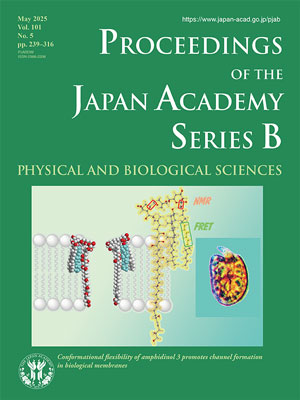Vol. 101 No. 5 (2025)
Review Series to Celebrate Our 100th Volume
-
Pursuing the identity of a natural medicine licorice by Dr. Shoji Shibata that he firstly investigated half a century beforeMichiho ITOVolume 101 Issue 5 Pages 239-248
Reviews
-
Conformational dynamics and molecular interactions of natural products: unveiling functional structures in biological membranesMichio MURATA, Masayuki SATAKE and Nobuaki MATSUMORIVolume 101 Issue 5 Pages 249-273
-
Dawn of photoredox catalysisMunetaka AKITAVolume 101 Issue 5 Pages 274-301
Original Article
-
Mechanism of puberulic acid contamination in red yeast rice tablets that caused a serious food poisoning outbreak in JapanTomoya YOSHINARI, Maiko WATANABE, Wataru AOKI, Seiji TANAKA, Naoko MASUMOTO, Michiho ITO and Takahiro OHNISHIVolume 101 Issue 5 Pages 302-316




